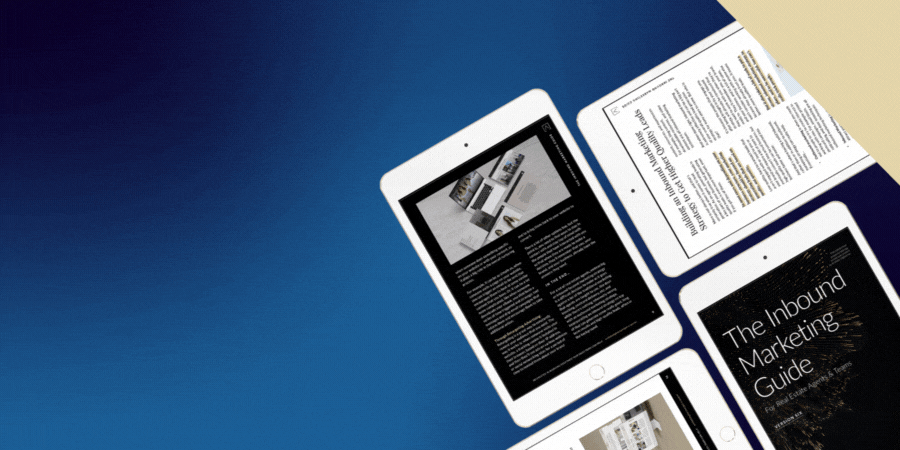How QR Codes Became Relevant in Real Estate Marketing

QR codes have been around for awhile, but you may not have known that; and that’s because they’ve really only recently risen in popularity. When they first came out, they never really caught on in a big way in marketing, and eventually, people stopped using them and they seemed to go away.
In those early days, to access whatever was on the other end of a QR code, you first needed to download an app that would allow you to scan it, which IMO was one of the primary barriers for mass adoption of the technology.
For many reasons , QR codes essentially failed. No one really knew how to use them, or for that matter, even wanted to.
And then at some point, all of the phone technology providers built QR code scan-ability into their camera apps, so you no longer needed an outside application to scan them, and while that made them more accessible, they still weren’t being used on a large scale.
Until, of course, the pandemic happened, and then everything changed for QR codes. They suddenly made a huge comeback, and they were more popular (and useful) than ever.
One of the first places you probably noticed them was in restaurants and bars. In lieu of a physical menu, you’d scan a QR code to access their online menu. After that, they seemed to be everywhere. Even governments adopted them as a way to show official vaccination status in some states and provinces.
★ QR codes have a much longer, more interesting history than outlined above. If you’d like to learn more about the history of QR codes, have a look at this post.
5 years ago, marketers didn’t know how to use them effectively, and people didn’t know what to do with them when they saw them. But now, QR codes, and their usefulness, has changed in big way. And this is certainly true when it comes to marketing.
Nowadays, there are a lot of good reasons to build QR codes into your real estate marketing strategy.
When Trackability is Important
In a lot of real estate marketing strategies, because of the way they’re being executed, a lot agents don’t really know what’s working and what isn’t (and therefore, can’t use that info to make decisions about where to spend their marketing dollars more effectively).
For example, if you do a lot of print marketing, you may have postcards, flyers, bus ads, billboards, magazine ads, etc. And in a lot of those cases, in those marketing campaigns, your CTA will simply be for someone to call you, email you, or visit your website, but how do you know if they’ve really done that, and if they did, which particular campaign they came form?
The answer is: you don’t. Not without some form of trackability; and that’s where QR codes can be really helpful because they’re excellent at tracking information.
Depending on which QR code platform you’re using to create QR codes, you’ll get a lot of information when someone scans your code. For example, if you created one for a single postcard campaign you sent out, you’d know:
- When someone scanned it (like date, time, etc).
- Where someone scanned it (by geo-location).
- And most importantly, you’d know that someone actually scanned it and interacted with your marketing campaign.
Without some form of trackability like this in place, you wouldn’t know that you got a lead through your postcard campaign, and as a result you might abandon it all together because “it didn’t work.”
★ Want to learn more about building or improving your marketing plan? Have a look at these posts:
- The Strategy of Effective Digital Touchpoints
- Daily Real Estate Marketing Habits to Help Build Marketing Success
- Building an Inbound Marketing Strategy to Get Higher Quality Leads
- Marketing Focuses for Agents in a Low Inventory Market
When Convenience is Important
In lot of case, it’s just more convenient to give someone a QR code to scan to get them to take an action, rather than getting them to type in a long URL or have them write something down.
For example, let’s say you have a home evaluation landing page you want to send someone to as part of a marketing campaign. You could tell them to type: www.mywesbite.com/free-home-evalution into a browser, or you could tell them to scan a QR code and be taken there automatically.
But of course, scanning a QR code isn’t just limited to sending someone to a landing page; there are a lot more actions you can do that would be useful, and convenient, like:
- send them your contact details via vCard,
- send them to your Instagram page,
- send them an SMS message,
- send them a link to a PDF,
- and a ton of other things.
Choosing a QR Code Provider
There are a lot of different QR code platforms and providers that you can use, but the primary thing is, if you’re going to go all in on QR codes, you really should use a paid, professional platform, like: Beaconstac, Flowcode, or qrcodemonkey.
While a free platform will certainly allow you to create codes that can be scanned, and take advantage of the convenience aspect of QR codes, to take full advantage of QR codes and benefit from the trackability aspect of them, you need to use a professional platform to be able to see what was scanned, when it was scanned, and where it was scanned.
Want to get better, more qualified leads and build your authority? Our Inbound Marketing Guide is a walkthrough of the overall philosophy of inbound marketing, why it’s effective, and how you can build it into your own real estate marketing strategy to get better marketing results.





















